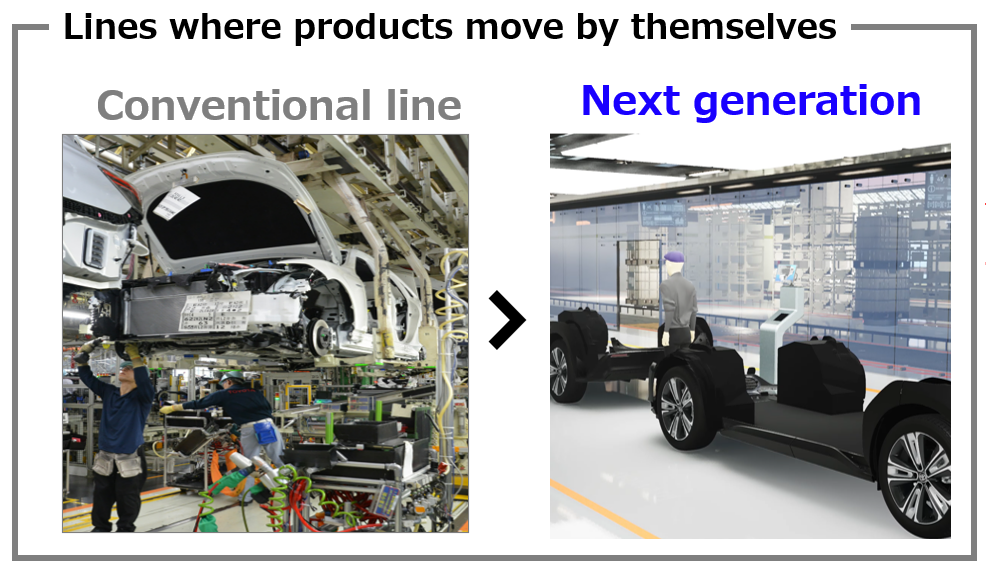Technology to pioneer the future, centring on innovative battery EV technology and the establishment of a hydrogen business
Under the banner “let’s change the future of cars,” Toyota Motor Corporation (Toyota) has announced a range of a new technologies that will support its transformation into a mobility company.
At a technical briefing in Japan, Hiroki Nakajima, Executive Vice President and Chief Technology Officer, explained Toyota’s technology strategy and the future direction of car manufacturing. He also talked about specific and diverse technologies, including concepts currently under development, that will help Toyota achieve the vision and policies it has communicated.
He was joined by Takero Kato, president of Toyota’s new BEV production centre, and Mitsumasa Yamagata, who is scheduled to become president of the company’s hydrogen factory, to be launched in July. They provided more detail on their respective strategies for the battery EV and hydrogen businesses.
PRESENTATIONS
Toyota’s technology and car manufacturing direction, Hiroki Nakajima, Executive Vice President and Chief Technology Officer
Toyota gave an explanation of the Toyota Mobility Concept at its public briefing in April. The three approaches key to its realisation are electrification, intelligence and diversification.
In the area of electrification, we will continue to pursue a “multi-pathway approach,” including the introduction of optimal powertrains for each region.
In the area of intelligence, in addition to vehicles and services, we will also promote initiatives to expand our connection with society, such as Woven City.
We will also continue to diversify our business by expanding our scope from “cars” to “society,” to include freedom of mobility and diverse energy options for all.
To promote these three themes technologically, we have been shifting resources to Advanced Development fields and actively investing in future-oriented areas since 20016, when the company system was inaugurated.
As of March 2023, we have shifted more than half our R&D staff and approximately half of our R&D expenses to Advanced Development fields, while increasing the total amount. We will accelerate this trend in the future.
We would like to promote car manufacturing based on three axes. The first is to pursue safety and security without compromise. We will further refine Toyota Safety Sense and deliver safe and reliable technologies to our customers.
The second is that the future will be built by everyone. We will create the future by connecting with our colleagues around the world through initiatives such as CJPT’s (Commercial Japan Partnership Technologies Corporation) efforts to decarbonise the commercia sector; our partnership with the CP Group in Thailand; and our collaboration in motorsports.
Third, we will accelerate localisation. As the needs of our customers in each region will differ further in the future, we will accelerate “development near our customers” at our R&D bases around the world.
Toyota has overcome what were considered to be difficult challenges with its technological capabilities and has developed numerous vehicles that are ahead of the times and paving the way for the future, such as Prius – now synonymous with hybrid vehicles – and the Mirai fuel cell car.
Let’s change the future of cars. We will continue to lead in creating a future society by using the power of technology to transport our customers into the future and connecting cars to society.
Next generation battery EV strategy, Takero Kato, BEV Factory President
What we hope to achieve with the BEV Factory – an organisation dedicated to battery EVS, launched in May – is to change the future with BEVs through the transformation of cars, manufacturing and the way we work.
On the vehicle axis, through technologies such as the integration of next generation batteries and sonic technology, we will achieve a vehicle cruising range of 1,000km. To produce more stylish designs, AI will be used to support aerodynamic performance, while designers will focus on expressing natural sensibilities. The Arene OS and full OTA (over-the-air) application will infinitely expand the possibilities for how cars can be enjoyed. Like the EV with a manual transmission, we will deliver exciting surprises and fun to our customers, with technologies that can only be achieved by a carmaker.
On the manufacturing axis, car bodies will be constructed from three main components in a new modular structure. Adopting giga casting will allow significant component introduction, which in turn will contribute to the reduction of vehicle development costs and factory investment. In addition, self-propelling production technology will reduce process and plant investment by half.
The BEV Factory is an “ALL IN ONE TEAM,” under a single leader, unifying functions and regions beyond the framework of carmaker, including Woven by Toyota and external partners.
This ONE TEAM will revolutionise the way we work, with everyone on the same site and with the same awareness of the issues, achieving quick initial response and decision making.
We will roll out next generation BEVs globally and as a full line-up to be launched in 2026. By 2030, 1.7 million units out of 3.5 million overall will be provided by the BEV Factory. These next generation BEVs will adopt new batteries, with which we are determined to become a world leader in BEV energy consumption. With the resources we earn, we will improve the appeal of our products to exceed customer expectations and secure earnings.
For more information read this article.
Views: 9


